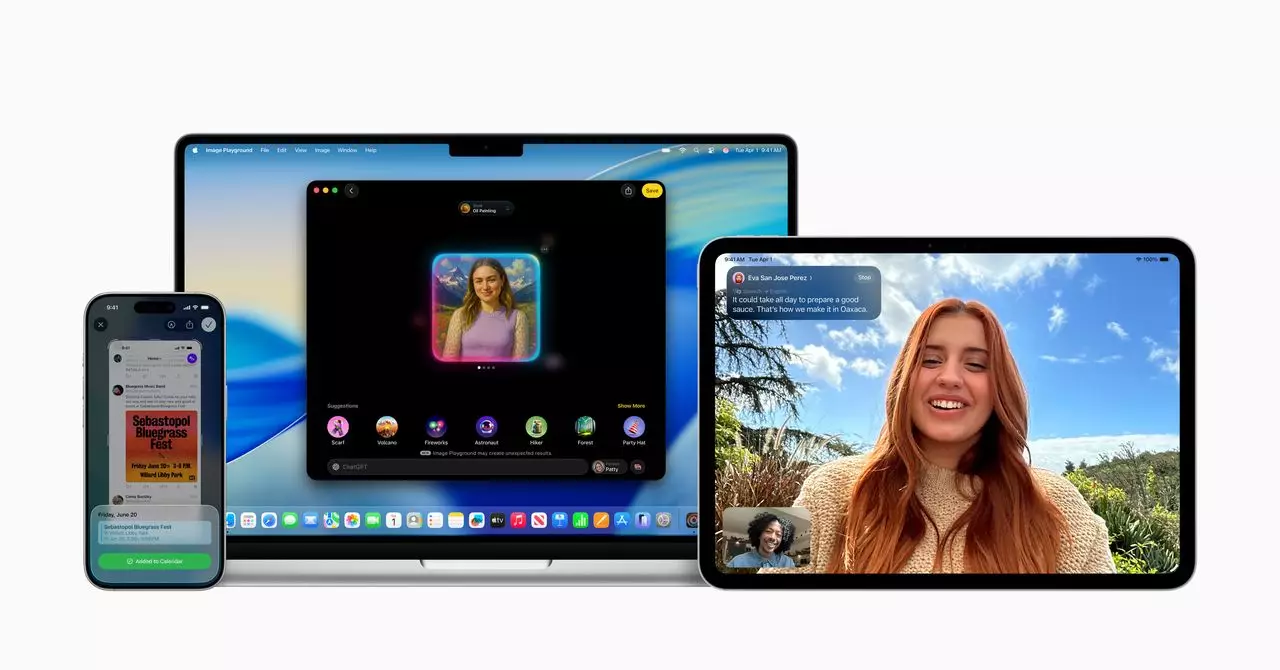Apple’s recent updates during the Worldwide Developers Conference (WWDC) highlight an interesting dichotomy in its approach to artificial intelligence (AI). While the company has made strides in integrating AI features into its flagship products—such as the iPhone, Mac, and Apple Watch—the overarching narrative suggests a cautious, almost reactionary strategy. The introduction of tools like the Foundation Models framework aims to empower developers, offering them the chance to harness Apple’s own AI models for app creation. However, one cannot ignore the lingering sentiment that Apple is trailing behind its more aggressive competitors.
This strategic blend of incremental improvements and new functionalities suggests that Apple is treading carefully, acknowledging the unpredictable nature of user engagement with AI features. For example, the recent launch of the Live Translation feature enables real-time dialogue translation for phone and FaceTime calls, potentially transforming communication across language barriers. This innovation might appear groundbreaking on the surface, yet it reflects a response to the industry’s rapid pace rather than a market-leading initiative.
The Power of Encouragement: Workout Buddy
Among the intriguing new features unveiled, Workout Buddy stands out as a testament to Apple’s focus on user experience. This AI-powered voice assistant is designed to motivate users during physical activity, a nod to the growing emphasis on health and wellness in the tech space. The feature goes beyond simple prompts; it tailors interactions to the user’s experience, such as congratulating them on achieving a personal milestone. While this personal touch enhances user engagement, the underlying question persists—how essential are such features when competing against the high-performing AI models offered by other companies?
Analysts argue that Apple’s emphasis on maintaining a positive user experience should remain paramount. The feedback from Paolo Pescatore of PP Foresight raises valid concerns regarding user preferences in selecting devices that provide AI-driven features. The tech giant must remain vigilant in upholding its reputation for seamless functionality while integrating innovative features that genuinely contribute to users’ lives.
Visual Intelligence and Beyond
In a world increasingly reliant on visuals, Apple’s enhancements to Visual Intelligence are noteworthy. By utilizing AI to interpret camera data, the new upgrades allow devices to understand their surroundings more acutely. The ability to analyze screenshots to identify products or summarize web pages could alter how users interact with content, potentially making iOS devices indispensable tools for everyday queries. While these features are attractive, they also underscore the need for Apple to cultivate a competitive edge in an already saturated market.
Apple’s ventures into tools like Genmoji and Image Playground are emblematic of a broader trend within tech—leveraging AI for creativity. Yet, while these innovations invite excitement, they risk being overshadowed by the formidable advances being made by its competitors. The gap felt in real-time AI interactions, such as those being developed by OpenAI and Google, tells a story of what could be achieved if Apple were to take bolder steps.
The Road Ahead: Catching Up in a Competitive Landscape
The disparity between Apple and its competition raises an essential point: as advancements in AI become increasingly foundational to personal computing, Apple must consider where it fits within this rapidly evolving paradigm. Francisco Jeronimo, an analyst at IDC, emphasizes the significance of making AI models accessible to developers. This accessibility is crucial, enabling a vibrant ecosystem around Apple’s technology while potentially blurring its previous image as a more closed platform.
The promise of Private Cloud Compute speaks to Apple’s commitment to security and privacy, two cornerstones of its brand identity. However, it begs the question of whether its AI models can universally excite developers and users alike when compared to those of OpenAI and Google. As Apple’s competitors unveil futuristic AI capabilities, like real-time communication and enhanced visual integrations, the need for Apple to embrace a more dynamic approach in its AI implementation becomes clearer. The digital landscape is evolving; Apple must not only keep pace but strive to lead, lest it risk becoming merely a participant in a race where the finish line moves faster each day.

